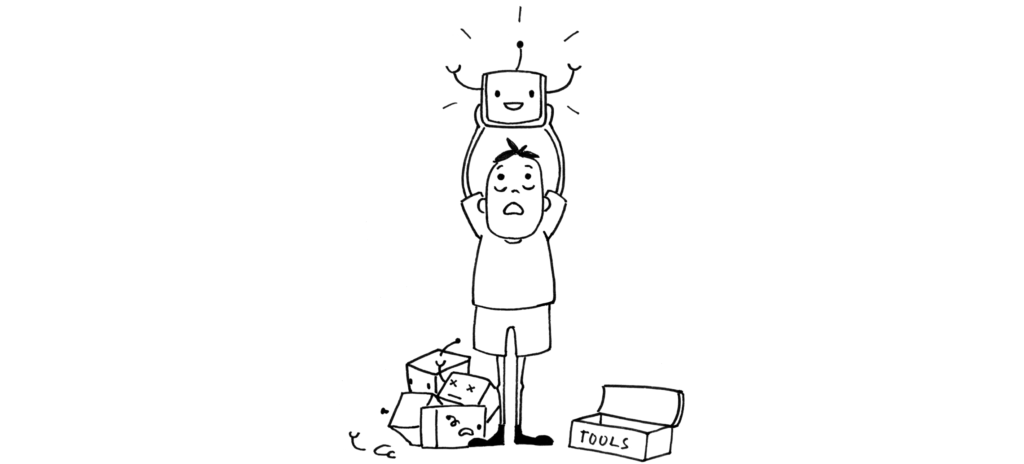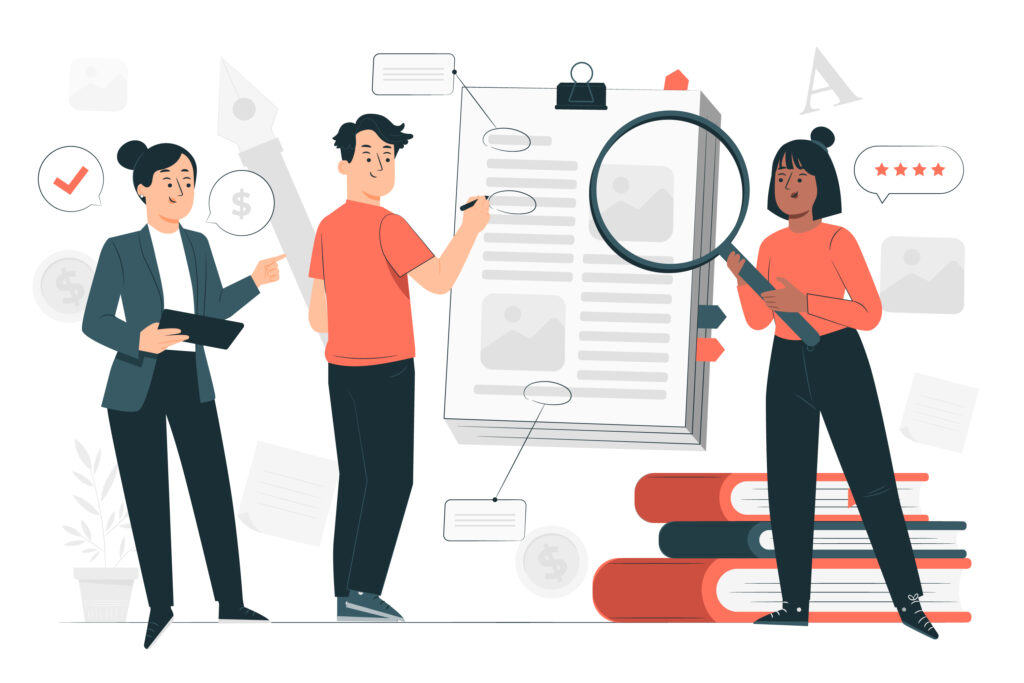Learning from customers doesn’t need to be a grueling, time-consuming process.
We’ve been thinking a lot about all the teams affected by the downsizing, reorgs, and layoffs companies have faced recently. And at the same time, companies need to learn from their customers more than ever. Learning from customers doesn’t need to be a grueling, time-consuming process.
We’re a product design company. In the past 8 years of helping companies , the one thing we’ve learned is that teams need access to customers. We believed in this so much that we built our own product that helps us do so.
Here are our top 5 tips on how companies empower their employees to learn from customers.

1. Remove Research Bloat
Many companies and teams create unnecessary bloat when it comes to learning from customers. It’s hard not to, “Research” is a word that carries a lot of weight, it must be important. We’ve found that having smaller conversations within teams helps us get closer to our customers.
Close the gap with your internal team. Having team members and stakeholders invested in your research are super awesome. We learned that over 70% of our researcher audience works pretty closely with other members of their team. The best way to maximize the quality of your questions is to first find out what is important to your team or what they think the customers need. That way you go into your customer conversations with strong hunches that help drive your research.
Qualitative questions through short surveys. By this point, our brains are full of questions we’d like to ask our customers. We want to keep the excitement and interest high with our internal teams so we have to go fast. We were surprised that many of our researchers would turn to slower methods like in webinars or even PowerPoint presentations when conducting initial research. We’re not saying that these methods aren’t valuable, we’re saying these methods take a lot of upfront investment.
Our presentation tips. There’re many ways to present findings to your team and, depending on your process, do what works for you. We’ve found presenting findings along the way to be a best practice, especially when working directly with stakeholders. Validating our design decisions as we go and wrapping up all the findings with our final deliverables is a great way to keep your stakeholders invested.

2. Find Your People
Then there’s the “small team” problem, it can be a challenge to start the process of learning from customers when you’re a team of one (we see you). A lot of the time the struggle isn’t crafting the “perfect” test; it’s “Who to ask” and “How to ask it”.
Find your customers. This can be a monumental task, especially if you don’t have an existing group that you access to survey. We suggest partnering with the sales or customer service teams to gain access to you customers. Or cast a wider net by paying for social media ads and manually screening participants, like these user researchers.
Speak your customers’ language. An overwhelming 90% of researchers agree, avoid using jargon, or overly technical terms to get the best answers (unless that’s the language your customers use). For our testing needs at Digital Circle we typically use more conversational language. Something that’s easy to understand.
Find your customers. Probably more important than the questions you’re asking are the people you’re asking. We were surprised that our audience of researchers would utilize more expensive tactics like targeted Facebook ads or time consuming intensive customer research. For this series, we’ve been tapping into our audience of researchers to learn their experiences and thoughts. You could imagine that the answers we receive would be far different from our audience of teachers.

3. Keep it Simple
Talking to customers ensures that we build better products. One of the hurdles that are sometimes more challenging for teams to leap is what to ask customers. After going through the process of getting the tools and the support, we can get a little writer’s block when it comes to what to ask. We’ve learned that not worrying about asking the “right” questions helps a lot to move things forward.
Keep situations simple. Testing in smaller sections of your workflow will help your customers collect their thoughts and respond more thoughtfully. Like the majority of user researchers, we’ve found that running several shorter, more concise surveys sets our participants up to provide more thoughtful answers.
Volume over perfection. We’ve found that learning from customers requires iteration. It’s rare when crafting questions to ask a customer that we create a “perfect” question.
When in doubt, get feedback. Another set of eyes on any project is always super helpful, we were delighted to learn last week and to be confirmed this week that so many of our research audience has other team members to bounce ideas off of. Finding out if your questions make sense, aren’t leading, and illicit the answers your team is looking for is always better with a teammate.

4. Test and Iterate
When learning from customers, seeking out strength in numbers “more questions”, not just the volume of questions to a small group of people but more questions to more people.
Group your tests into themes. Being organized is super important when conducting any research, and even more so when you’re asking a lot of questions to a lot of customers. Like a majority of Researchers tested, we suggest grouping or theming your tests. For example, if you’re running tests on your sign up flow, break the test up into specific sections: comprehension questions, usability directives, and emotional gauges. Keeping your tests concise for your customers helps them stay engaged and helps you later when synthesizing the answers you’ve collected.
Battle bias with more participants. Some are a little more guilty than others of not collecting enough feedback, like the 60% of researchers we surveyed. When making creative decisions, we may only rely on ourselves or the opinions of a single coworker to decide what to do. These ideas may have the best of intentions, but any answer you receive that isn’t from your customer will be biased. We’re on the journey to make better products for people, the only way we can do that is by talking to as many customers as possible.
Iterate and create better questions. Thanks to our design roots we know iteration is the key to learning. After collecting all the answers you may learn that you have more questions! If you do like 25% of researchers, that’s awesome – test some more. This is how we learn how to craft better questions, that lead to better answers, which are the building blocks to amazing products.

5. Make Findings Actionable
Making findings actionable is the first step in learning from customers, we turned to our audience of Researchers, Marketers, and Designers about the teams and projects they’re working on.
Timing is everything. Learning from customers should fall in line with project goals to maximize the impact of your testing. We learned that 76% of our audience work with other teams on projects. In our projects, we ensure that our testing is in line with what we’re delivering because pushing the project forward and making decisions is the best use of time.
Making the case for customer feedback. You may be in a similar situation to the 54% of our audience who don’t have a budget for research or are unsure of what that budget may be. The biggest way to make an impact here is to surface the benefits of learning from your customers to your project leads.
Combine powers. The best way to get buy-in is to partner with other teams within your company. Marketing and Sales departments usually get the lion’s share when it comes to budgets, and 54% of our audience say they are the most likely teams to work with. Talking to those teams to find out their needs and gaps could be the push your company needs to invest in learning from customers.
Building better products and services should empower you to do research whether you’re a “researcher” or not. We think learning from customers should be a part of every team, Sales, Marketing, Design, the list goes on.


